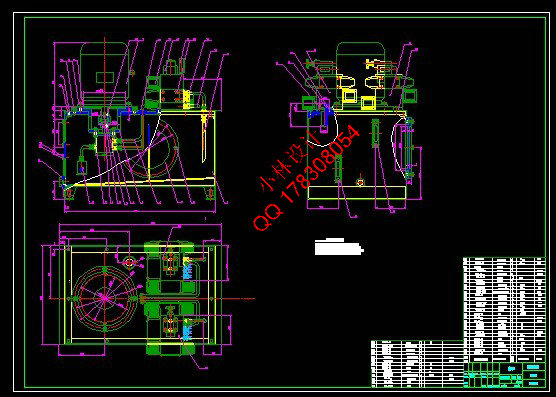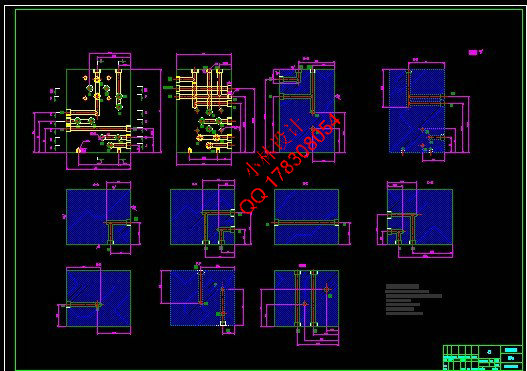|
设计简介 |
设计描述:
文档包括:
word说明书一份,共55页,约24000字
任务书一份
开题报告一份
外文翻译一份
CAD版本图纸,共9张
摘 要
高空作业车是用来运送工作人员和工作装备到指定高度进行作业的特种车辆,是将高空作业装置安装在汽车底盘上组成的。高空作业装置包括工作臂、回转平台、副车架、工作斗、液压系统和操纵装置等。现在的高空作业装置具有操作平顺、工作稳定、自动调速、安全可靠等优点,大大提高了空中作业的工作效率。高空作业车是利用汽车底盘作为行走机构,具有汽车的行驶通过性能,机动灵活,行驶速度高,可快速转移,转移到作业场地后能迅速投入工作,因此被越来越多的应用在工程建设、工业安装、设备检修、物业管理、航空、船舶、石化、电力、影视、市政、园林等许多行业,是近几年来国内发展最快的专用汽车产品之。
关键词: 高空作业车;液压系统;泵站
ABSTRACT
Aerial word truck is used to transport personnel and equipment to the designated special vehicle height work, is the aerial device installed in the automobile chassis. Aerial device comprises a working arm, rotating platform, side frame, basket, hydraulic system and control device. Aerial device now has the advantages that the operation is smooth, stable operation, automatic control, safe and reliable, greatly improving the working efficiency of the air. Aerial vehicle is the automobile chassis as a running mechanism, has the vehicle performance, flexible, high speed, fast transfer, transfer to the job site to work quickly, so it is more and more used in many industry construction, industrial installation, equipment maintenance, property management, aviation, ships, petrochemical, electricity, television, municipal, gardens, is one of the most rapid development in recent years of dedicated automotive products.
Keywords : operating vehicle height ; hydraulic system ; Pump stations
目录
摘 要 III
Abstract IV
目 录 V
1 绪论 1
1.1 引 言 1
1.2 高空作业车的发展概况 2
1.2.1 概况 2
1.2.2 国外趋势与动向 3
1.3 国内现状、差距与如何提高的方法 4
1.3.1 现状 4
1.3.2 差距 4
1.4 液压传动概况 5
1.4.1 液压传动的定义 5
1.4.2 液压传动的发展概况 5
1.4.3 液压传动系统的组成 6
1.4.4 液压传动的优缺点 6
1.4.5 液压系统的设计步骤与设计要求 6
1.5 课题简介 9
1.5.1选题的必要性 9
1.5.2 课题主要研究的内容及目的 10
2 设计要求 11
2.1 总体设计要求 11
2.2 动作要求 11
2.3 技术性能要求 12
3 确定设计方案 12
3.1 总体设计方案 12
3.2 确定执行元件的形式 12
3.3 液压系统的设计步骤 12
3.4 整体设计结构图 13
3.5 液压系统 14
3.5.1 液压系统工作原理 14
3.5.2 液压系统原理图 15
4 液压系统计算 16
4.1 液压缸的设计计算 16
4.1.1 液压缸的最大载荷 16
4.1.2 确定系统工作压力 22
4.1.3 液压缸的内径计算 22
4.1.4 液压缸缸筒壁厚和外径计算 22
4.1.5 液压缸活塞杆直径 24
4.1.6 液压缸活塞杆强度校核 25
4.1.7 液压缸活塞杆稳定性校核 26
4.1.8 液压缸的工作压力 27
4.1.9 液压缸的流量 28
4.1.10 液压缸选择 29
4.2 液压泵的选择 29
4.2.1 计算液压泵的流量 29
4.2.2 计算液压泵的压力 30
4.2.3 选择液压泵 30
4.3 电动机的选择 31
4.4 管路的选择 32
4.5 其他辅助元件的选择 32
4.5.1 虑油器 32
4.5.3 油箱 34
5 阀板的设计 36
5.1 阀的集成形式 36
5.1.1 有管集成 36
5.1.2 无管集成 36
5.2 无管集成液压控制装置的设计流程 36
5.3阀块的设计 37
5.3.1 整体设计方案 37
5.3.2 阀块的设计 37
6 泵站设计 42
6.1 泵站概述 42
6.2 泵站设计目的 42
6.3 泵站的连接和安装方式 43
6.3.1 液压泵的安装方式 43
6.3.2 电动机与液压泵的连接方式 43
6.4 防震降噪措施 43
7 结论与展望 44
7.1结论 44
7.2展望 44
致谢 45
参考文献 46
|










